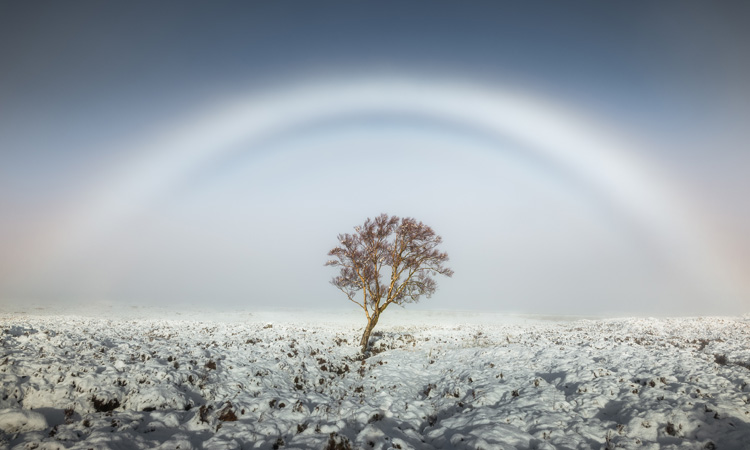Light Touch
Mistbow Versus Glory
Exploring the subtle differences between two atmospheric optical phenomena—one ghostly pale, the other gaudily colored.
 A white mistbow or fog bow, captured in Glencoe, Scotland. [S. Robertson/Getty Images]
A white mistbow or fog bow, captured in Glencoe, Scotland. [S. Robertson/Getty Images]
A few years ago, on a web board that I frequent, someone asked what things were like before the creation of the rainbow, after the “Noah’s Flood” episode in the biblical book of Genesis. How could you not have a rainbow in a world consistent with our physics? I suggested a number of possible ways. One of the more interesting, I thought, was that until then, water droplets came only in minuscule sizes, so that one would see only mistbows (also known as fog bows). When the sizes of droplets are on the order of microns, the colors are completely absent, and you have only a white bow. Perhaps, after the Flood, God let the droplets get a little bigger, allowing full-color rainbows to form.
…Log in or become a member to view the full text of this article.
This article may be available for purchase via the search at Optica Publishing Group.
Optica Members get the full text of Optics & Photonics News, plus a variety of other member benefits.
